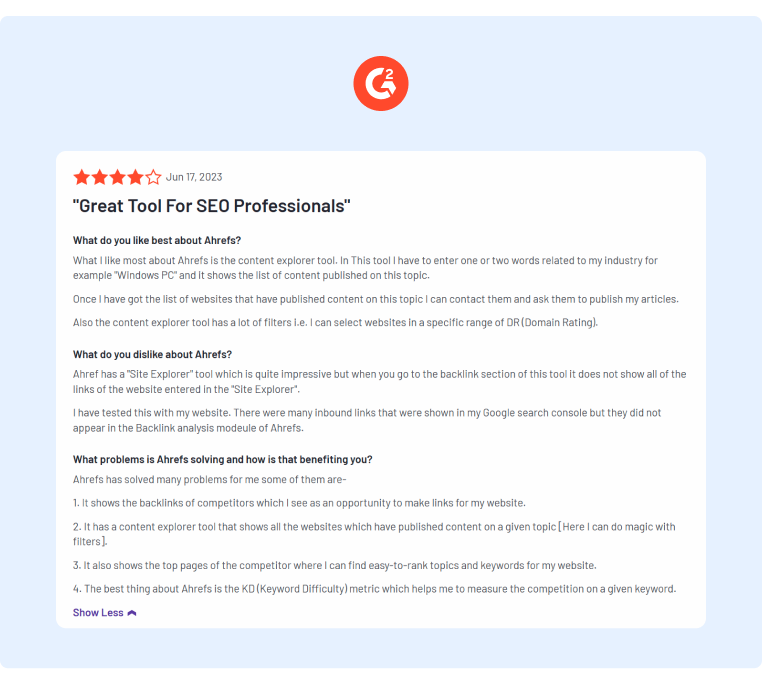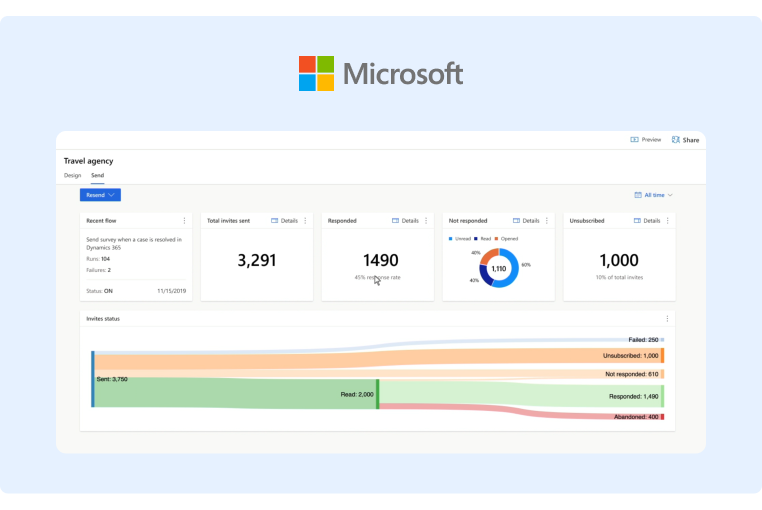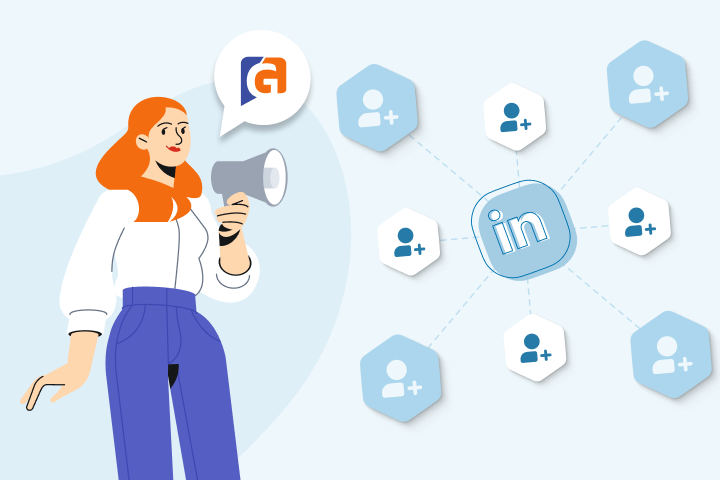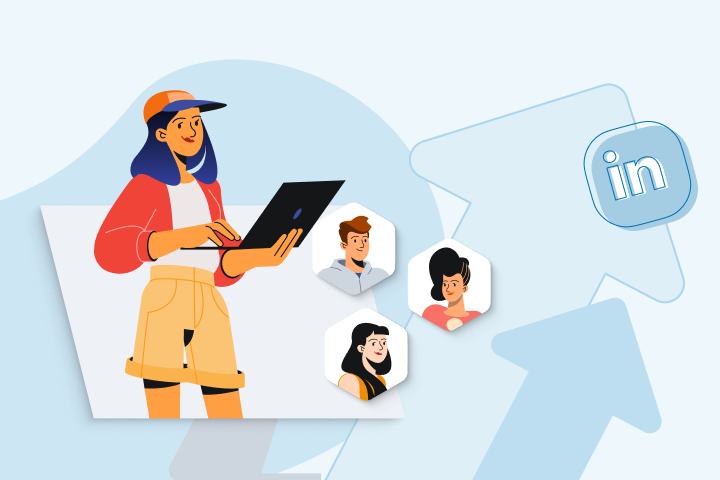Utilizing Customer Feedback to Create Outstanding Social Media Posts
Positive reviews and recommendations are a powerful tool for driving sales in business. Before customers make a purchasing decision, they will often do their research before they buy.
In fact, 98% of people read online reviews for local businesses. Seeing positive online reviews or product recommendations helps build trust with current and potential new customers and, ultimately, lead them towards making a purchase.

Source: 99 Firms
However, you don’t want to only rely on the power of reviews. You want to leverage reviews to strengthen your marketing. Here, we’ll look at how customer feedback can help marketing teams and social media managers in creating outstanding social media posts.
Importance of Social Media in Business
Social media is a great tool for businesses. It enables businesses to showcase their products or services, connect to their customers, and build and strengthen customer and industry relationships.
However, to amplify your social media marketing presence, businesses need to do more than simply post updates and pictures. Successful social media campaigns use their channels to engage, entertain, and inform customers. Utilizing customer feedback to create content is a great way to do this.
9 Best Practices To Utilize Customer Feedback for Outstanding Social Media Posts
Using customer feedback alongside social media posts for business is a powerful way to build trust. But, doing this in a meaningful and engaging way requires a bit of dedication and creativity.
Here are nine best practices for gathering and utilizing customer feedback to create social media posts.
1. Encourage and Incentivize Customer Feedback
Effective utilization of customer feedback not only fosters trust but also plays a vital role in building relationships through social media. However, in order to use customer feedback, first, you need to collect it. This can be tricky since where customers leave feedback can vary.
For example, Google is one of the most popular places for people to leave reviews. Other places where customers can leave reviews include Facebook, Bing, Yelp, and Tripadvisor, to name a few.
To encourage reviews, consider which platform(s) suits your business the best and send a link out in your customer communication or include a feedback form on your website. Simplifying the review process will make customers more inclined to take part and make it easier for you to respond to (and gather) feedback.

Responding to reviews and showing how much you appreciate them can also encourage more people to give feedback. Timing is also important. Catching the customer at the right time can make a huge difference. If they’ve had the product for a while and the novelty has worn off, a review could feel redundant, whereas harnessing that initial excitement may prompt them to immediately give a product review or recommendation.
Helping customers out when they need it and being easy to reach are also key. For example, if a customer is struggling with some software, you can get them to download a remote desktop management tool so you can demonstrate the process.
Ultimately, providing the best service will increase the likelihood of a positive review.
2. Gather Feedback-Related Data To Guide Decision-Making
In addition to collecting feedback, you also want to make sure you’re getting real feedback. If you’re getting spam reviews or surveys from bots, that data isn’t real. Using data based on real customer feedback not only will help your business, but your customers, too.
It will give you a better understanding of your target customers, including how they view and use your products or services.

Source: Microsoft Dynamics 365 Customer Voice
Polls and surveys are great ways to gather data. In turn, you can take that statistic based data and turn it into a social media post. For example, a chocolate bar manufacturer could use data gathered from a feedback survey to create a social media marketing post with wording like this:
97% of our customers love the new taste!
Statistics based on genuine customer experiences are powerful marketing tools because they prove the worth of your product.
Collecting the data across channels can be time-consuming, but there’s always the option of running a consumer panel via video conferencing. This can be recorded, and comments and statistics harvested for marketing. If you know how to do a conference call on an Android, you’ll find the features user-friendly and functional.
3. Develop Narrative From Actual Customer Interactions
Collecting feedback from interactions such as email, phone calls, surveys, and review platforms helps businesses to identify common patterns and themes. You can then leverage this information to create posts with more persuasive power.
Let’s say, you’re repeatedly hearing comments like your staff is friendly. You could post, “Have you met our friendly team?” Then take it a step further, and create a post showcasing some of the friendly faces behind your brand to really get the most out of this positive trait.
To increase your chances of getting positive feedback, it’s important to have great customer contact. Imagine the mood of a customer who has been on hold for an hour. The interaction would probably be quite sour, but if you had a landline call forwarding service, directing the call to a mobile that’s answered, the customer experience could be more positive.
4. Use Direct Quotes and Customer Testimonials
Direct quotes and customer testimonials are seen by customers as genuine and authentic.
These quotes or testimonials can be taken from any form of interaction, even your conversational AI platform (if you have one). At the end of the chatbot conversation, you can include a quick survey to ask the customer about their experience using the service.
5. Address Customer Pain Points and Offer Solutions
This could be addressing common queries or concerns. Only Domains does this on their website, so visitors can see straight away why they stand out from the competition. McDonald’s is another business that does a great job of addressing customer concerns quickly and professionally.

Source: Statusbrew
Another example could be a face cream company that is often asked how long their cream takes to show results. By addressing this in a social media post, the company can work to alleviate misconceptions by posting something along the lines of ‘100% of our customers saw an improvement in 2 weeks.’
Think about the number of people who don’t ask these common questions.
Do they make their own minds up and move on? Don’t let that happen to your business.
6. Showcase User-Generated Content (UGC)
Showing off user-generated content (UGC) can be a great way to engage people as it’s not just ‘another business marketing post.’ Creating hashtags can encourage people to share photos or ‘how-to’ posts, which feature your product across their channels, thus increasing the reach of your campaign.
Other ways to show off UGC include sharing or reposting posts featuring your product and adding a ‘thank you’ to the creator.
Reposting reviews or posting screenshots of a review are great ways to prove the reviews have come from genuine clients. You can keep these short and snappy by taking snippets to use as attention-grabbing headlines. By including a link, anyone who wants to read more can.
It’s important to note you need to protect your brand’s reputation, so avoid posting or resharing any offensive or unprofessional content.
Utilizing employees as company advocates and social media supporters can also be a great tool. Using employee advocacy software like GaggleAMP can help improve brand awareness, reach of your company content, and leads. It can also cultivate a happier, more engaged, workforce.
7. A/B Test Posts, Monitor, and Adapt Depending on the Results
Testing what posts work for you can help you refine your social media strategy moving forward. For example, Facebook has a feature where you can A/B test different post titles.
Here, you can test if text only posts work, or if it’s better to combine an image with text. Even try out video posts. Test them out and then use what resonates best with your target audience.
8. Respond and Listen to Customer Feedback in a Timely Manner
Commenting on online customer feedback is best when you strike while the iron is hot. You can maximize the impact of positive feedback by sharing it straight away. Similarly, responses to negative feedback should be done quickly, otherwise, it may appear that you don’t care or value the feedback.

Source: SuperOffice
Responding to negative reviews by explaining what measures have been taken to address the issue(s) can restore customer faith. It also demonstrates that you listen to and value customer feedback. This may also encourage others to post reviews and feedback since they know that they’ll be heard.
Reducing the risk of negative feedback can be a simple case of having good customer service and communication, and telephone support is still the preferred method of support for customers. Having good call center software can improve the customer experience and reduce bad feedback.
9. Align Customer-Centric Content With Brand Messaging
By aligning your brand messaging and content, you can create content that resonates with your target market. For example, if your ethos is to be environmentally friendly, you wouldn’t use the image of an F1 race car in a post about speedy delivery. Instead, you would emphasize your environmentally friendly, reusable packaging.
Of course, aligning content with brand messaging isn’t easy. You’ll need detailed analytics to get the customer insights that you need. Investing in a social media management tool like GaggleAMP can provide you with the data insights that you need to succeed.
Conclusion
There’s no doubt that word-of-mouth referrals have always had the greatest impact on sales. But with social media now being a valid and well-utilized form of communication, businesses have to adapt if they haven't already.
The type of business you run will determine which channels are best suited for your business and your target market. By engaging people and encouraging them to leave reviews, you can harness that feedback to create exciting posts that will, in turn, drive sales.
So, why not build customer feedback into your social media marketing strategy today?










